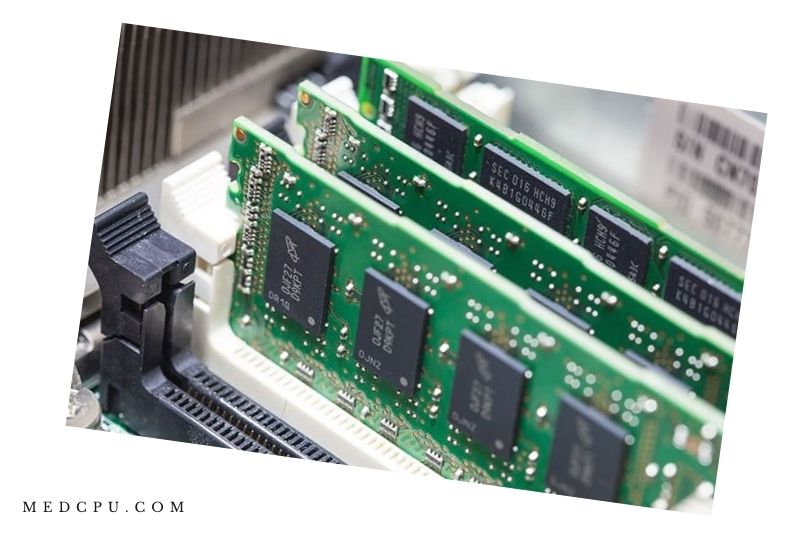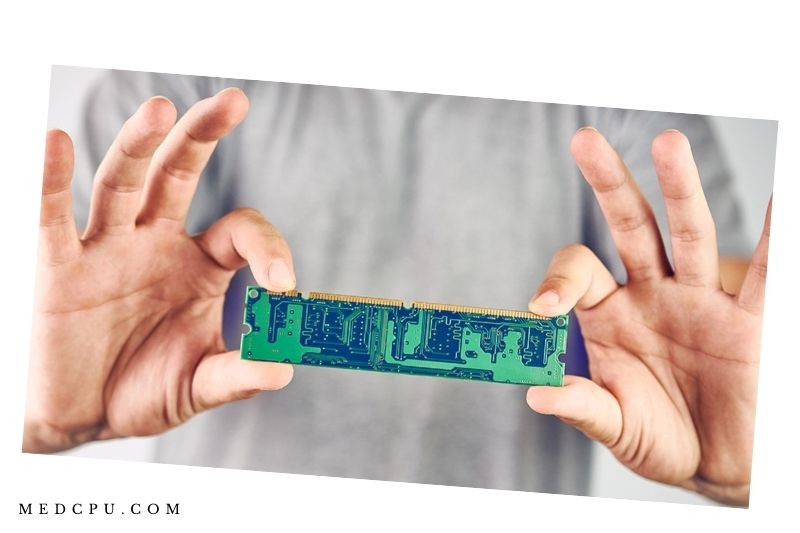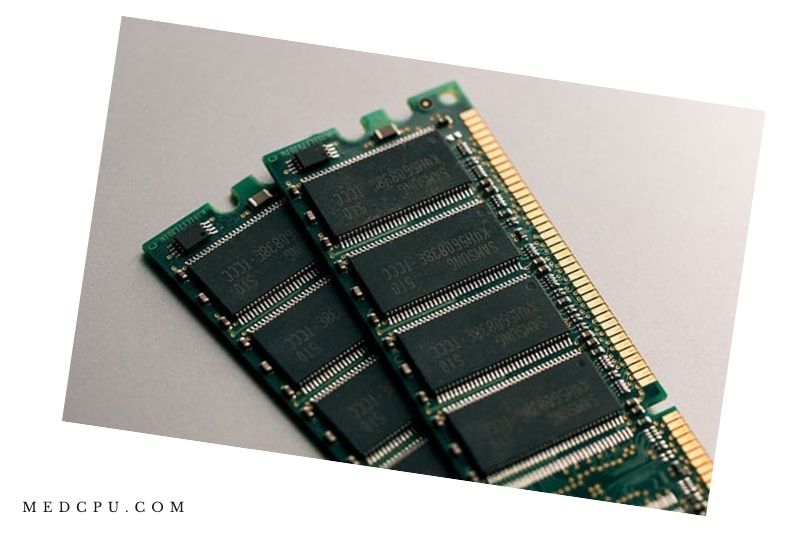If you’re looking for that next upgrade in your computer or laptop, then adding in some more RAM is one of the best things to do. Ram is something that most people don’t think about when they are building their computers, but it is one of the most important things. It allows your computer to make all of its processes more efficient, which will ultimately lead to more responsive performance.
If you’re a hardcore gamer and a serious gamer, then looking for a RAM upgrade in the early stages of the game is vital to optimizing gameplay.
But How Much Ram For Gaming? Check out this guide to find the perfect ram for you.
What Does RAM Do to Gaming Anyway?

RAM (Random Access Memory) is where your computer stores data and programs as they are being executed. Let’s say you have a game. Your game may be stored on a hard disk, but it is slow and inefficient to retrieve data from the HDD. RAM is crucial because it allows your computer to access data quickly. Your computer will then move your game data to RAM to allow for a quick load.
Insufficient RAM can cause your computer not to store all the game data that it requires. This can lead to sluggish frames and a poor gaming experience.
It is important to note that dedicated GPUs have their RAM, called vRAM. vRAM is different from system RAM because it focuses solely on rendering graphics to your monitor. Here’s where things get interesting. If you want to play 4K gaming, you will need to increase your VRAM.
Gaming used to require 4GB RAM. There have been many improvements and updates over the years that make 4GB RAM insufficient for an average game. It makes sense to buy more RAM, especially with the prices dropping for RAM kits.
What role does RAM play in games?
The random access memory stores all the data your computer might need to run the game smoothly.
Because different games required different RAM configurations, choosing the proper RAM configuration was more difficult in the past. Gaming was not mainstream at the time, and not everyone was familiar with what a gaming computer was.
Today, however, things are much more straightforward. These 64-bit operating systems are now the norm and support far more RAM than the 32-bit versions. A 32-bit operating system can only read 4GB of RAM. 64-bit OSes have a higher limit, but it’s not something we’re likely to see anytime soon.
Modern computers can have more RAM than they need.
The RAM Speeds explained
It’s great that you have settled on the right amount of RAM. There’s more to RAM that is just picking the right amount. There are many variables that can affect RAM sticks. They could have different speeds, bandwidths, transfer rates, and latencies. The technical specifications of RAM can seem daunting. However, it is important to remember that RAM sticks will only work together if they are of the same generation.
Memory sticks have gone through four generations since the early 2000s: DDR (Double Data Rate), DDR2, DDR3, DDR4, and DDR5. These generations are not compatible with each other. One stick of DDR4 and one of DDR3 memory cannot be used on the same motherboard. Because each type has a different slot shape, your motherboard can only support one.
If you aren’t buying the stock that is several years old, the most recent motherboards support DDR4. But check first! This information is usually available on the manufacturer’s website. If you are upgrading your current rig, but don’t know the model of your motherboard, you can type MSINFO32.exe in Windows 10’s taskbar search field, hit return, and then look for System model.

Check the speed of your RAM. It will be displayed in MHz. DDR4’s maximum speed defaults at 2400MHz. However, you can purchase DDR4 RAM at a higher speed. As with CPUs, higher numbers mean faster processing. Naturally, that means higher prices. A pair of 8GB sticks branded at 5000MHz sells many times as much as the same brand at 2400MHz.
Is the performance difference worth it? While a faster RAM clock speed can increase gaming performance fractionally, some benchmark tests show that it is more important to consider RAM’s latency.
The CAS (Column Access Strobe), latency, measures the time for the RAM to receive information and then act on it. It is measured in nanoseconds. A lower CAS seems to have a greater impact on gaming framerates than does the clock speed.
If you choose RAM based on speed, try to balance a lower CAS latency with a higher MHz speed.
What is the Right RAM?
You might not use a gaming computer for your entire work or gaming needs. What is the optimal RAM amount for different devices? Let’s take an in-depth look.
For Tablets
Tablets are not the best devices for high-performance gaming. You are probably looking for a tablet capable of handling a lot of activity. A tablet with a minimum of 1 GB RAM is enough.
The RAM required for crosswords and e-books would likely not need to exceed 4GB. If you are playing games, streaming Netflix, or creating digital media, you can increase the RAM to 8GB.
For Laptops
There are many options for RAM on a laptop. Steam forums are a great place to ask gamers if they can run certain games on their laptops.
A 4GB model is good if gaming is not your main reason for buying a laptop. If you are serious about gaming, opt for 8GB and an AMD/NVIDIA GPU.
This combination should allow you to do a lot more than desktop CPUs.
For Desktops
Desktop gaming computers should have a minimum of 8GB. If they have anything less, game performance is severely affected by the fact that the computer is trying to pull and store data even though the game is still running.
Check out our comparison between Laptop Ram vs Desktop Ram, click here
How much RAM do I need for Gaming?

This is the most common question buyers ask when looking for a new gaming pc. Let’s explore!
Frequent user
You won’t need more than 4GB of RAM if you are a regular computer user. You don’t need to have a lot of RAM or an SSD if you only use your computer for essential functions, such as web pages or Photoshop.
Gamer
Gamers require a bit more power for their RAM, CPU, GPU. A gaming PC usually requires at least 8GB of RAM. Gaming builds rarely require more RAM than 8GB or 16, so you can choose either.
For most gamers, however, 8GB is the ideal minimum. You’ll have many problems and issues if you go lower.
Professional User
You might consider upgrading to 32GB if you are essentially married to your gaming computer. Although 32GB is considered excessive, there are some benefits.
First, you can run anything without sweating. You have enough space at the table for your computer to perform well. A 32GB hard drive is an excellent option because your computer will be ready for the future. Your RAM and hardware will be sufficient for you to continue using it.
If you are looking to invest over the long term, 32GB might be your best option.
How much RAM is too much?
Technically, you can’t have too much RAM unless your motherboard is capable of handling more. 8GB RAM is ideal for gaming, as most, if not all, of the games that can be run at this RAM capacity, will work well. Although 8GB RAM is not a waste, it can take a while before it is used up. This depends on the purpose of your computer.
For gamers, 16GB RAM is recommended. Higher capacity RAM kits are great for gamers who stream or create content. Higher capacity RAM is an excellent option for video editors and 3D modelers.
Google Chrome and other applications require some memory to function correctly. You will have the best chance to avoid crashes or issues by having a little bit of memory for such applications.
If you’re an avid gamer who streams casually, 16GB RAM will be your best choice. 8GB should be sufficient for casual or hardcore gamers who don’t use their PC for anything other than gaming.
Read also Gaming Laptop Vs Console comparison, click here.
What is Dual-Channel RAM?
Many modern computers feature dual-channel memory. Dual-channel mode (also known as interleaved) allows the CPU’s memory controller and RAM to exchange data through two channels. This allows RAM to read and write to two sticks of memory simultaneously. This increases bandwidth.
Most motherboards only have two DIMM slots; dual-channel mode can be enabled automatically. If you have four slots and are using two sticks of memory, the memory must be placed symmetrically to use the same channel. These slots can be color-coded and may be staggered or side by side. For more information, refer to the motherboard documentation.
To achieve optimal performance, make sure that every memory stick has same speed, capacity, timings, and other specifications. If possible, avoid mixing and matching different module specifications.
Memory Timings
RAM timings indicate latency. This is the time before RAM can execute commands that have been given to it. The memory timings can be described as a series of numbers such as 16-18-18-36. These numbers may be found on the module’s sticker.
Each number corresponds with a particular test. For example, the first number is CAS (Column Address Strobe). Latency is the number of clock cycles required for the memory modules to return data following a request from a memory controller.
It can be difficult to compare RAM modules based on timings. For example, CAS Latency indicates the number of cycles and the duration of each cycle. This is what makes it difficult to judge responsiveness. DDR3 memory, for example, has a lower average CAS Latency than DDR4. However, it performs worse because of its slower clock speed.
Gaming PCs don’t often consider memory timings a top priority. Overclockers can lower the BIOS timings manually to test for stability. You can achieve better performance from your existing RAM if you are successful.
Most gamers consider RAM speed and capacity to be the most important factors.
Overclocking1 RAM
Overclocking is possible if you have high-performance RAM. This can be done easily with Intel(r), Extreme Memory Profile (Intel(r), XMP).
An Intel(r) XMP profile adjusts voltages and timings to improve performance when it is selected in the BIOS. These preset settings have been certified stable.
You can also modify the memory profiles of some motherboards and fine-tune settings from the BIOS.
This comprehensive guide will show you how to increase RAM speed.
Cooling and Aesthetics
Your setup can look better with memory heatsinks. They are, however often only for aesthetic purposes.
RAM produces heat just like other components, but it won’t get very hot unless operating at extremely high speeds. If you aren’t overclocking RAM, the heatsink can be skipped. As with all components, it is essential to ensure proper airflow.
RGB lighting is a great way to personalize your memory modules and improve the visual appeal of your system. Make sure the RGB memory sticks that you choose are compatible with your specific motherboard brand.
Highlights
- RAM is volatile memory, which temporarily stores data for quick access.
- RAM can increase frame rates and frame pace when playing video games.
- When choosing RAM, consider both speed and capacity.
- Learn the differences between form factors such as DIMM and SO–DIMM.
- To play modern games and multitask, you need at least 16GB of RAM.
FAQs

Is 32GB of RAM overkill?
The decision on how much RAM you need is dependent on your requirements, but 32GB of RAM is not overkill for gaming. The extra RAM can be useful for advanced 3D models, advanced video editing, and other tasks.
It is highly recommended to buy the high-speed memory modules, so you can get the most out of your system. You should keep in mind that 32GB is the maximum amount of RAM you can use on any Intel computer, so you can upgrade to 64GB if you want more.
Will faster RAM improve FPS?
Many people think that faster RAM will improve FPS, but it actually has no impact on FPS. You can go as low as 1600MHz or as high as 3000MHz, the performance difference is not significant.
Do RAM upgrades have a performance impact?
In short, RAM upgrades have a very small performance impact on gaming systems. In most cases, upgrading to faster RAM will not improve FPS, but the difference is very minimal.
Is Will increasing RAM increase speed?
It’s possible that the answer to the question will depend on the brand of RAM and the speed of the system. It is safe to say that more RAM will increase the speed of the system was already lagging. If your system is high-performance, it’s better to keep the RAM at the original speed.
Is CPU or RAM more important for programming?
RAM is often thought to be more important than CPU, but there are many factors that go into this. It depends on the type of programming and how it is being used. For example, a database programmer might need a lot of memory and a lower clock speed to perform better, but a video game designer might not need much memory and a higher clock speed.
How is too much RAM for Minecraft?
The answer to this question really depends on what type of RAM you are using, but for starters, it’s recommended that you have at least 4GB of RAM. For gaming, 8GB or more would be better. When you have a ton of RAM it just means that your computer is able to process loads of information simultaneously which can greatly increase the performance of whatever task you’re performing.
Conclusion
So you just learned how much memory you really need for gaming. Don’t forget that there is more to getting the best performance out of your computer than just how much RAM it has. If you want to get the most performance possible, you also need to get the best parts for your computer, like CPUs or GPUs.
Hopefully, you find this MedCPU’s guide helpful. If you need any more help on this subject, please feel free to ask me in the comments. I will try to help you as best I can.

Eyal Ephrat serves as the co-founder and CEO of medCPU.com, where technology is making significant strides in the field of medicine. Through his experience in purchasing PC and laptop equipment and various other tech products, Eyal Ephrat contributes valuable insights to medCPU’s mission.
